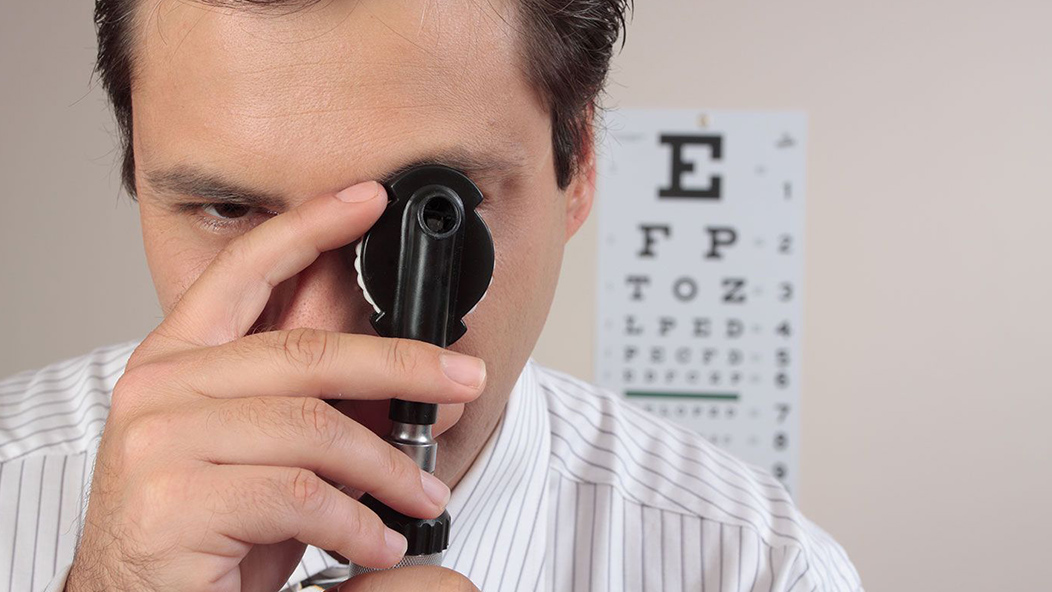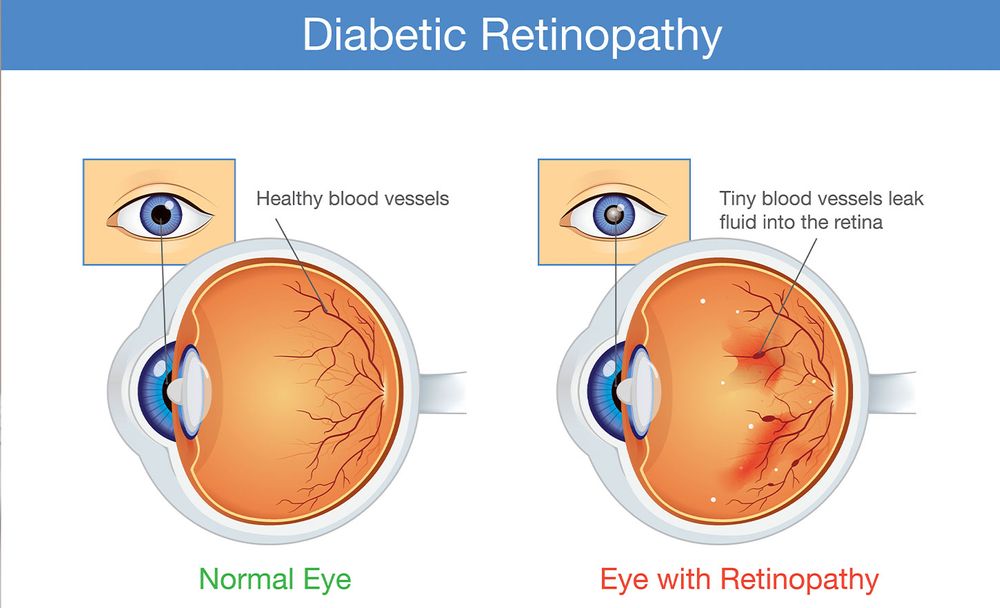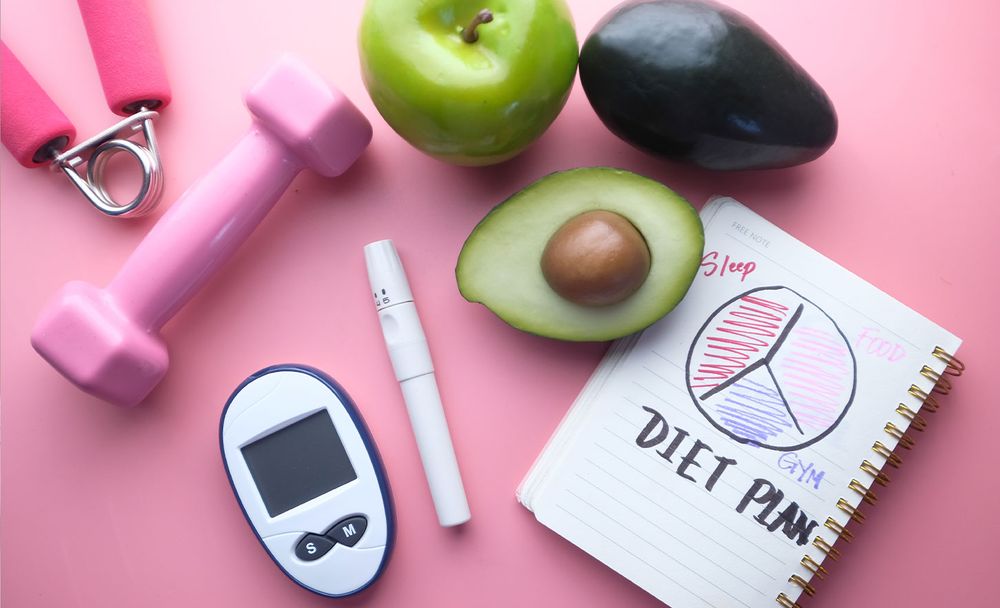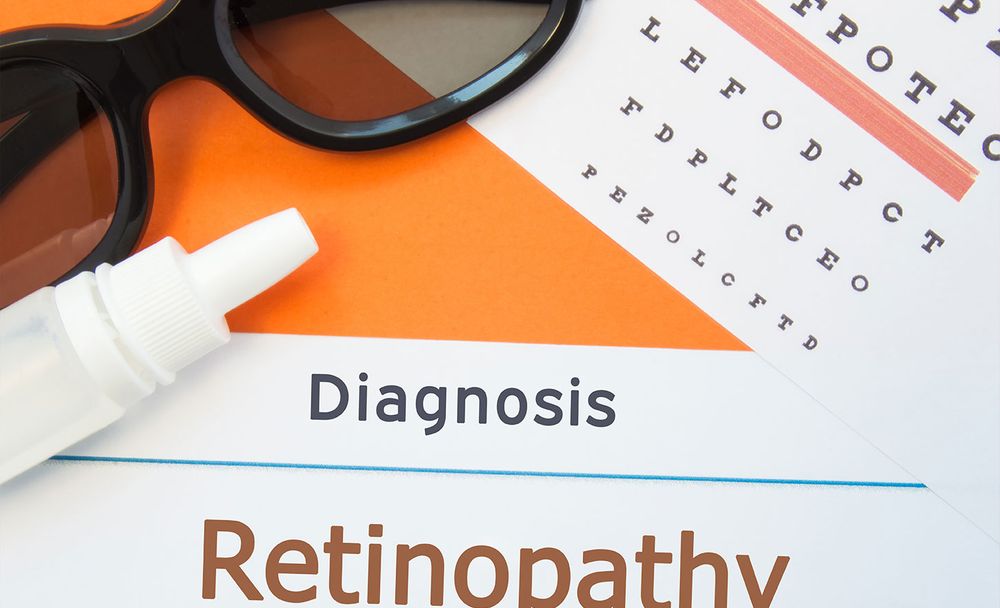Join Our eNewsletter!
Subscribe to our monthly newsletter to receive encouraging advice to help you lead a healthy lifestyle.

Don’t Be Blindsided by Diabetic Retinopathy
By Salman Rahman, M.D.
Having Type 1 or Type 2 diabetes can lead to a number of other conditions. One of these is diabetic retinopathy, a complication that’s caused by damage to the blood vessels in the light-sensitive tissue in the back of the eye called the retina.
The condition can occur in anyone with Type 1 or Type 2 diabetes, but the less controlled your blood sugar is, the more likely you are to develop it.
There are two types or stages of diabetic retinopathy:
- Early diabetic retinopathy (non-proliferative diabetic retinopathy – NPDR) is the more common form of the condition, which causes the walls of the retina’s blood vessels to weaken. As a result, tiny bulges or microaneurysms can develop and protrude from the smaller vessel walls. This blood vessel damage can cause fluid and blood to leak into the retina. The larger retinal vessels can start to dilate and become irregularly shaped. Nerve fibers in the retina can also begin to swell.
- Advanced diabetic retinopathy (proliferative diabetic retinopathy) is the more severe form of the condition, during which poor blood flow to the retina can lead to the growth of new, abnormal blood vessels. The growth of the new blood vessels can cause bleeding inside the eye and stimulate scar tissue, which over time can cause the retina to detach from the back of the eye. Pressure can also build up in the eyeball, damaging the optic nerve and resulting in glaucoma.

Symptoms
Over time, diabetic retinopathy can cause blindness, but in the early stages you may not have any symptoms or may only have mild vision problems.
As the complication progresses, you may experience these symptoms in one or both eyes:
- Blurred or fluctuating vision
- Floating spots or dark strings in vision
- Dark or empty areas in vision
- Vision loss
See a doctor as soon as possible if you have sudden vision changes, such as blurriness, spottiness, or haziness.
Causes and Risk Factors
The primary cause of diabetic retinopathy is too much sugar in the bloodstream leading to damage of the tiny blood vessels that deliver nourishment to the retina. When the retina’s blood supply is cut off, the eye attempts to grow new blood vessels. However, they don’t grow properly and, as a result, leak blood and other substances into the retina.
There are certain factors that can contribute to the risk of developing the condition:
- How long you’ve had diabetes (risk increases over time)
- Poorly controlling your blood sugar level
- Having high blood pressure
- Having high cholesterol
- Using tobacco
- Being of African American, Hispanic, or Native American descent
Pregnancy can make diabetic retinopathy worse. While it’s safe to be pregnant with the condition, your doctor may recommend getting regular eye exams throughout your pregnancy.
Preventing Diabetic Retinopathy
While it’s not always possible to prevent diabetic retinopathy, there are ways to reduce your risk of developing it or increase the chances of catching it early.

- Have regular eye exams and be sure to inform your eye doctor of your diabetes.
- Manage your diabetes by eating healthy, participating in regular physical activity, routinely monitoring your blood sugar level, and taking your medications as prescribed.
- Keep your blood pressure and cholesterol under control by maintaining a healthy diet, exercising, and losing excess weight.
- Ask your doctor about getting a hemoglobin A1C test (or glycosylated hemoglobin test) to obtain your average blood sugar level over the previous two to three months.
- Stop smoking and other tobacco use, since it can increase your risk of various diabetic complications.
- If you experience any sudden vision changes, such as blurriness or spots, contact your doctor as soon as possible.
Diagnosis and Treatment
Diabetic retinopathy is most often diagnosed through a comprehensive dilated eye exam. Your doctor will look for damage and swelling of the retina, scar tissue, bleeding, and signs of glaucoma related to diabetic retinopathy.

Depending on the type, stage, and severity of the condition, your physician will either attempt to slow or stop its progression.
In the early stages, when non-proliferative diabetic retinopathy is mild to moderate, treatment may not be needed, but your eye doctor will closely monitor your eyes. You should also ask your primary care doctor or endocrinologist about ways to better manage your diabetes and control your blood sugar, which can help slow the progression.
Once diabetic retinopathy progresses to the advanced stage (proliferative diabetic retinopathy or macular edema), treatment is commonly needed, but it’s not a cure. While it can slow or stop the progression of the condition, future retinal damage and vision loss are still possible.
Depending on your specific retinal issues, your doctor may recommend one of four surgical treatments.
- Focal Laser – An outpatient laser treatment that can stop or slow the leakage of blood and fluid in the eye
- Panretinal Photocoagulation – An outpatient laser treatment that can shrink abnormal blood vessels
- Vitrectomy – A procedure in which a surgeon makes a tiny incision in the eye to remove blood or scar tissue from the back of the eye
- Eye Injections – A procedure in which a medication is injected into the back of the eye to treat swelling of the retina
If you have Type 1 or Type 2 diabetes, don’t turn a blind eye to the possibility of developing diabetic retinopathy. Be aware of the warning signs, tell your doctor if you experience any vision changes, and, above all, stay on top of managing your diabetes.








